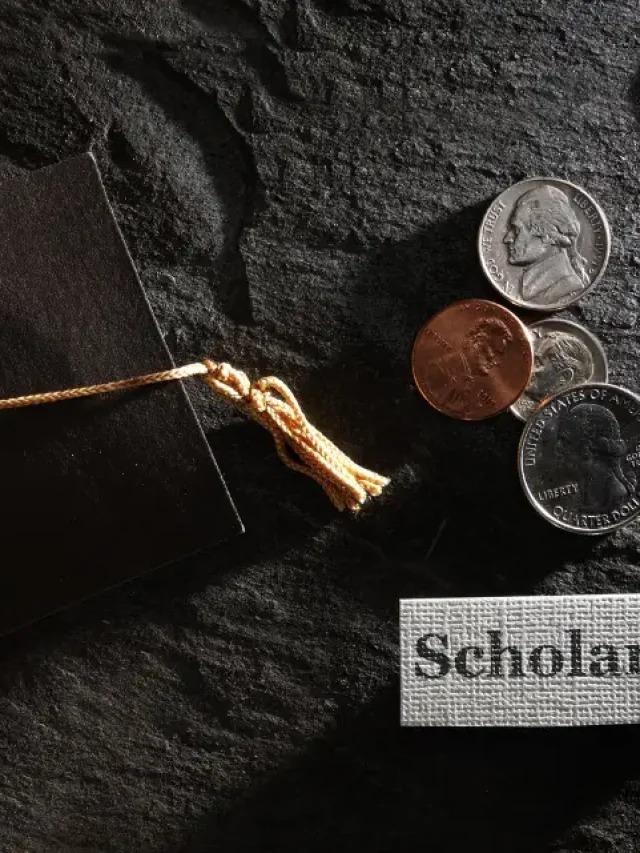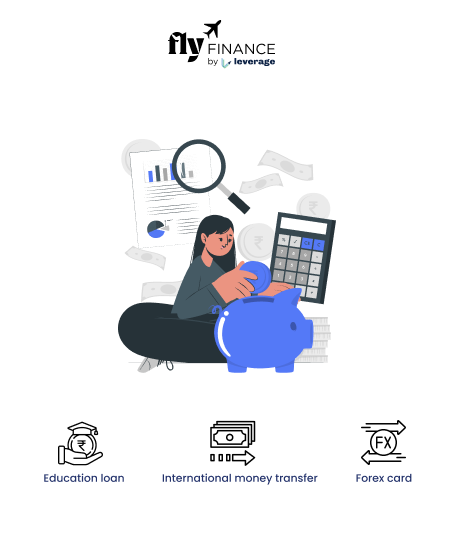International money transfers allow you to send funds directly to a beneficiary’s bank account abroad, whether through a bank or a digital payment platform. In India, the Reserve Bank of India (RBI) regulates these transactions, known as outward remittances, with a maximum limit of USD 250,000 (approximately INR 2.06 crore) per financial year for purposes like education, travel, medical treatment, or investments.
This guide explains how does international money transfer work, steps to transfer money internationally, required documents, fees, time required, and key considerations. Let’s get started!
Table of contents
What Is an International Money Transfer?
An international money transfer is the process of sending money from one country to another, typically involving a conversion of currencies. These transactions are facilitated through various channels, such as banks, money transfer operators, or digital platforms, each offering unique features and processing times.
Knowing how international money transfers work ensures you choose the most suitable option for your needs. Below are common purposes for transferring money overseas from India:
- Education Abroad: Paying tuition fees or living expenses for students studying internationally.
- Medical Treatment: Covering costs for treatments or surgeries abroad.
- Travel or Vacation: Funding international trips or holidays.
- Property Purchases: Buying real estate in foreign countries.
- Overseas Investments: Investing in foreign markets or businesses.
- Family Support: Providing financial assistance to relatives living abroad.
- Employment Abroad: Sending funds for work-related expenses or relocation.
- Bill Payments: Settling international utility or service bills.
Understanding the purpose of your transfer can help you comply with RBI regulations and choose the right transfer method.
Also Read: 10+ Cheapest Ways for International Money Transfers
How International Money Transfers Work?
International money transfers involve moving funds from one country to another, typically requiring a SWIFT code (Society for Worldwide Interbank Financial Telecommunication) or routing number to identify the beneficiary’s bank. Even if the sender and recipient use the same bank, an International wire transfer is still required due to cross-border regulations.
The process varies slightly depending on whether you use a bank, online platform, or money transfer service like Wise, Western Union, or PayPal. Below, we outline the steps for both online and in-person transfers.
Steps to Transfer Money Internationally
Transferring money internationally requires careful attention to detail to ensure funds reach the intended recipient securely and promptly. Let’s breaks down the step-by-step process for both online and in-person transfers, making it easy to follow whether you’re using a bank or a digital platform.
Online International Money Transfer
Online International wire transfers are convenient and often faster than traditional methods, allowing you to initiate transactions from anywhere with an internet connection. Follow these steps to transfer money internationally online:
- Log In to Your Banking Platform: Access your bank’s online portal or app and navigate to the wire transfer or international remittance section.
- Enter Beneficiary Details: Provide the recipient’s name, address, bank name, account number, account type (e.g., savings or current), and the bank’s SWIFT/BIC code.
- Specify Amount and Currency: Input the amount you wish to send and select the currency (e.g., USD, EUR, GBP).
- Pay the Transfer Fee: Review and pay the processing fee, which varies by bank or platform.
- Submit and Verify: Confirm the details and submit the transfer. You may need to verify the transaction via OTP or two-factor authentication.
In-Person International Money Transfer
In-person transfers are ideal for those who prefer face-to-face assistance or need to handle complex transactions. Visiting a bank branch allows you to work directly with staff to complete the international money transfer. Here’s how it works:
- Visit Your Bank Branch: Go to your bank and inform the staff you want to initiate an international transfer.
- Provide Beneficiary Details: Submit the recipient’s name, address, bank name, account number, account type, and SWIFT/BIC code.
- Specify Amount and Currency: Indicate the amount and preferred currency for the transfer.
- Pay the Fee: Settle the transfer fee, which may be higher for in-person transactions.
- Complete Documentation: Submit required documents (see below) and receive a transaction receipt.
Documents Required for International Money Transfers from India
To initiate an international money transfer from India, you must provide specific documents to comply with RBI regulations and ensure the transaction is legitimate. Here is a list of the standard documents required by most banks and transfer providers:
- Form A2: Form A2 is a mandatory RBI form for outward remittances, available from your bank or online.
- PAN Card Copy: For identity verification and tax purposes a pan card is required .
- Proof of Funds: Bank statements or other documents showing the source of funds.
- Purpose-Specific Documents: E.g., university admission letters for education, medical invoices for treatment, or property agreements for real estate purchases.
- Fee Receipt: If applicable, proof of payment for the transfer fee.
Always check with your bank or transfer provider for additional requirements based on the transfer purpose.
Costs Associated with International Money Transfers
Understanding the costs involved in international money transfers is crucial for minimizing expenses. Fees and exchange rate markups can significantly reduce the amount received by the recipient. Here’s a breakdown of the typical costs.
- Transfer Fees: Charged by the provider, ranging from USD 0 to USD 45.
- Exchange Rate Markup: Providers add a margin (0.5%–3%) to the mid-market exchange rate, reducing the recipient’s funds.
- Intermediary Bank Fees: Additional charges (USD 10–USD 20) by banks involved in routing the transfer.
- Recipient Fees: Some services charge the beneficiary to collect funds, especially for cash pickups.
- Average Cost: According to the World Bank, the global average cost for a USD 200 transfer was 6.94% in Q3 2024.
Key Considerations Before Transferring Money Internationally
Before sending money abroad, it’s crucial to evaluate several factors to minimize costs and avoid delays. To ensure a smooth and cost-effective transfer, keep these factors in mind:
1. Transfer Time
The duration of an international transfer can impact your plans, especially for time-sensitive payments. Below are the details of the time taken for wire transfers, online transfers, and demand drafts.
- Wire Transfers: Typically take 3–5 business days, depending on the bank and destination country.
- Online Transfers: Faster, often completed in 1–2 business days, especially with digital platforms like Wise or PayPal.
- Demand Drafts: The slowest option, taking 5–10 days or more due to physical delivery.
Factors like public holidays, time zones, and the destination country’s banking system can also affect processing times.
2. Exchange Rates
Foreign exchange rates fluctuate daily based on global market conditions. Banks and transfer services often add a markup to the mid-market rate, impacting the final amount received. Compare rates across providers to get the best deal.
3. Transfer Fees
Fees vary widely and may include:
- Fixed Fees: A flat charge (e.g., USD 10–USD 50 per transfer).
- Percentage-Based Fees: A percentage of the transfer amount (e.g., 0.5%–2%).
- Currency Conversion Fees: Additional charges for converting INR to foreign currency.
- Intermediary Bank Fees: Some transfers involve third-party banks that charge extra.
Always review the total cost, including hidden fees, before initiating the transfer.
4. Regulatory Compliance
Ensure your transfer complies with RBI guidelines. For example, transfers exceeding USD 250,000 per financial year require special approval. Additionally, certain transactions (e.g., gifts or donations) may have specific limits or restrictions.
Also Read: How to Transfer Money Internationally Between Banks?
Tips for Efficient and Cost-Effective Transfers
Maximizing the value of your international money transfer requires careful planning and comparison. These practical tips can help you save money and ensure timely delivery.
- Compare Providers: Use comparison tools to evaluate fees, exchange rates, and transfer speeds.
- Check Exchange Rates: Opt for providers offering rates close to the mid-market rate.
- Avoid Hidden Fees: Choose services with transparent pricing, like Wise or Instarem.
- Verify Details: Double-check recipient information to prevent delays or returned funds.
- Use Digital Platforms: Online services are often cheaper and faster than traditional banks.
What is the Best International Money Transfer Service
Selecting the right transfer provider can save you time and money. Let’s compares banks, digital platforms, and money transfer operators to help you choose the best option for your needs:
- Banks: Reliable but often charge higher fees and offer less competitive exchange rates.
- Digital Platforms: Services like Fly.finance, Wise, Revolut, Western Union, or PayPal provide faster transfers, lower fees, and transparent rates.
- Money Transfer Operators: Ideal for cash pickups or smaller transfers but may have higher costs for large amounts.
Compare providers based on fees, exchange rates, transfer speed, and user reviews. Among all international money transfer options, Fly.finance stands out as the best choice.
Knowing how international money transfers work empowers you to make informed choices, whether sending money for personal or professional purposes. By selecting the right method, comparing costs, and ensuring accuracy, you can save time and money while meeting your financial obligations.
FAQs on International Money Transfer Work
International money transfers in India send funds abroad via banks or various online platforms, using a SWIFT code. RBI regulates with a USD 250,000 annual limit, requiring Form A2 and PAN.
Ans. International money transfers can be made using several payment methods, depending on the provider’s speed, and cost. Common options include:
– Wire Transfers: Direct bank-to-bank transfers using SWIFT or IBAN, ideal for large amounts but may take 3–5 days.
– Digital Platforms: Services like fly.finance, PayPal, or Western Union allow payments via bank accounts, debit cards, or credit cards for faster transfers.
– Demand Drafts: Physical drafts sent to the beneficiary’s bank, suitable for specific cases but slower (5–10 days).
– Credit/Debit Cards: Accepted by some platforms for smaller transfers, though fees may be higher.
The time required for an international money transfer varies by method, currency, and provider. Typically:
Wire transfers take 3–5 days, online transfers 1–2 days, demand drafts 5–10 days.
International wire transfers are secure, reliable, and ideal for large sums. They use SWIFT for global reach, ensure direct bank deposits, and comply with RBI regulations, offering transaction tracking.
International wire transfers can be slow (3–5 days) and costly, with high fees and exchange rate markups. Intermediary bank charges and RBI documentation requirements may add complexity.
Yes, you can transfer money internationally without a SWIFT code because some providers use alternative routing numbers or IBANs, but SWIFT codes are standard for most international bank transfers.
Yes, there limits on international money transfers from India the RBI allows up to USD 250,000 per financial year for most purposes. Higher amounts require special approval.
Most banks and transfer services provide a transaction reference number or tracking ID. Use this to monitor the transfer’s status online or by contacting the provider.
Transfers for specific purposes (e.g., gifts or investments) may attract taxes like TDS (Tax Deducted at Source). Consult a tax professional for clarity.
We hope this blog has cleared all your doubts about how international money transfer work. If you need financial assistance regarding studying abroad then feel free to reach out to Fly Finance.






























This guide offers a really clear breakdown of how cross-border money transfers work—covering everything from the SWIFT process to required documents and costs. Super helpful for anyone navigating international payments!
Hi Hassan Ali,
Thank you for your insightful comment! I’m thrilled you found the post helpful.
For more details, reach out to our experts at 1800572126 to help ease your education loan and other services.